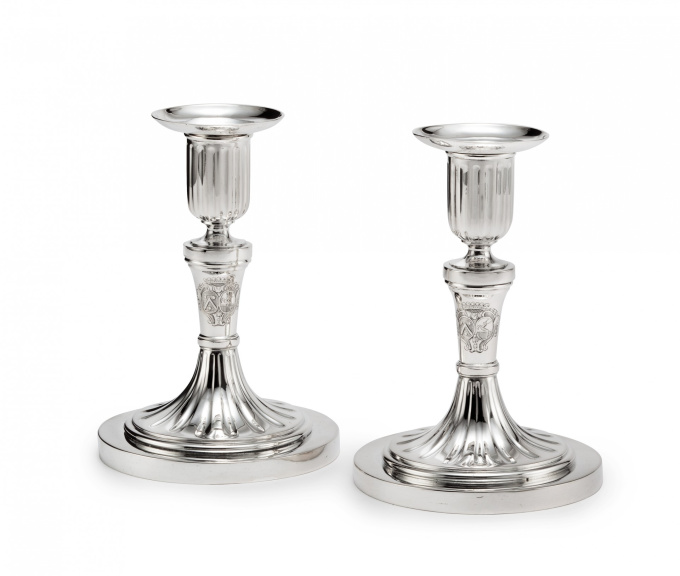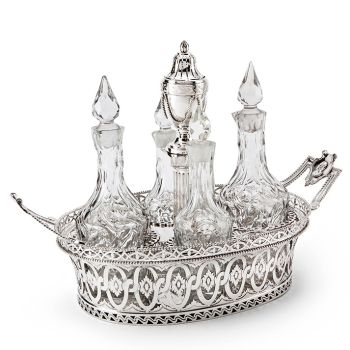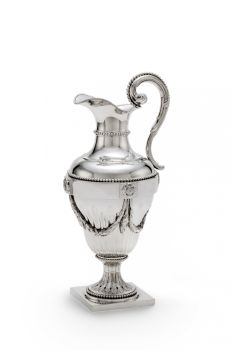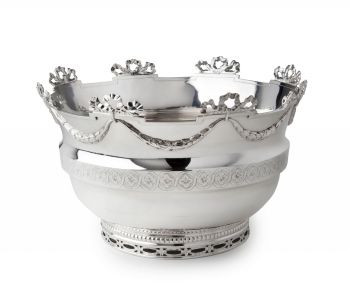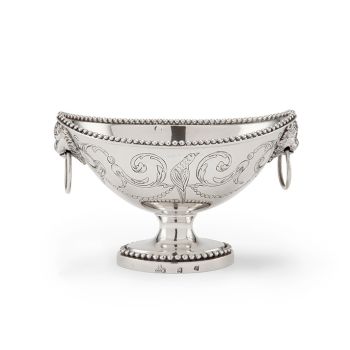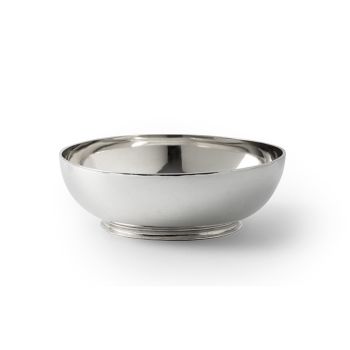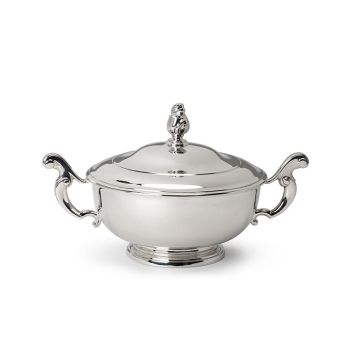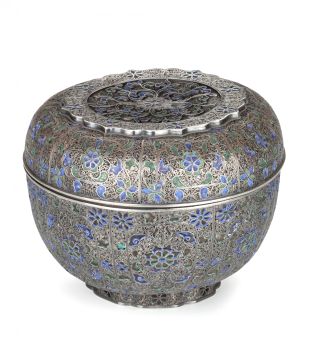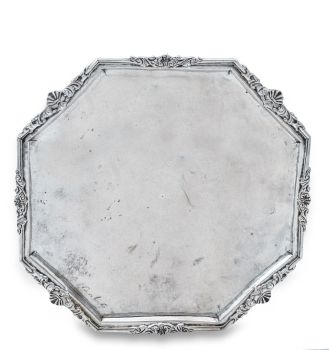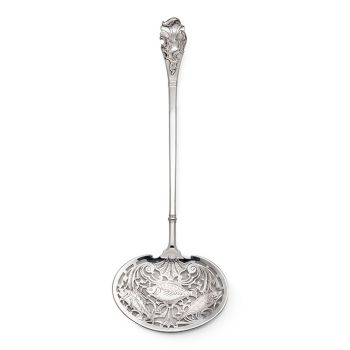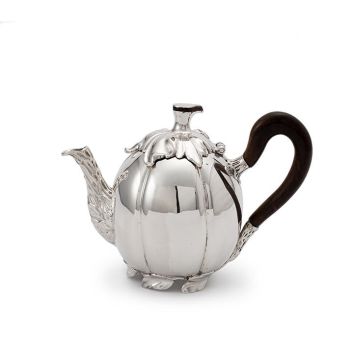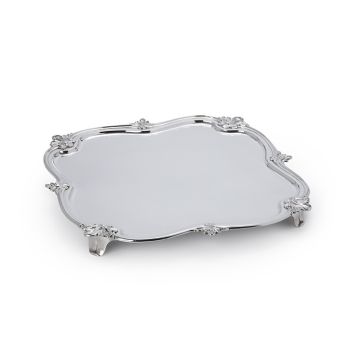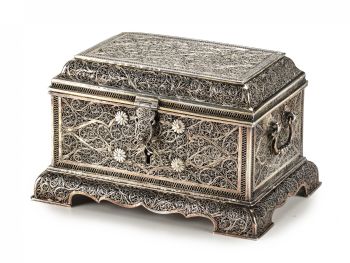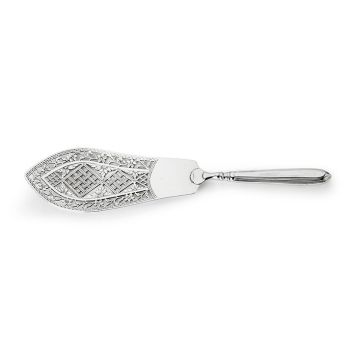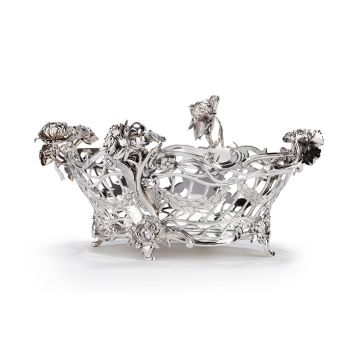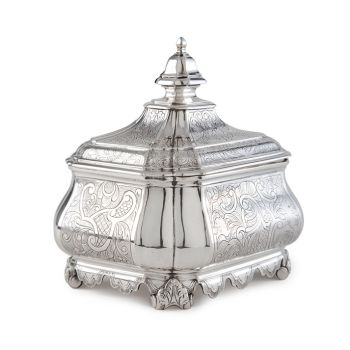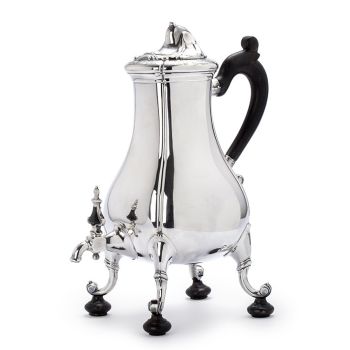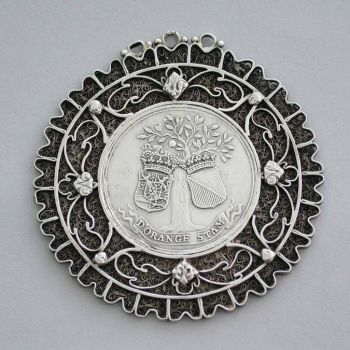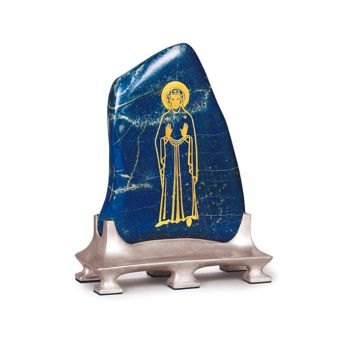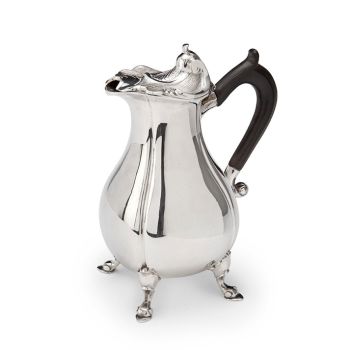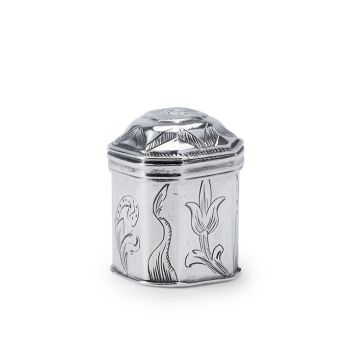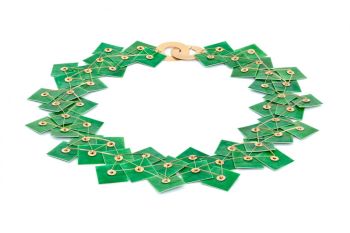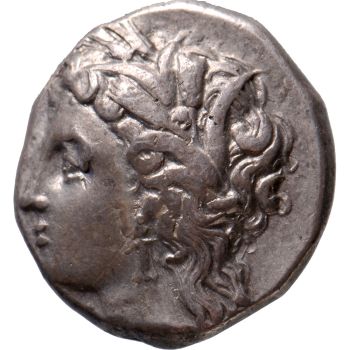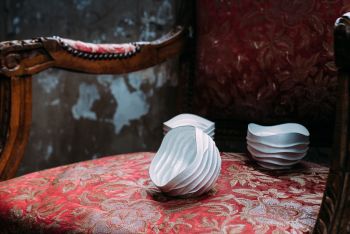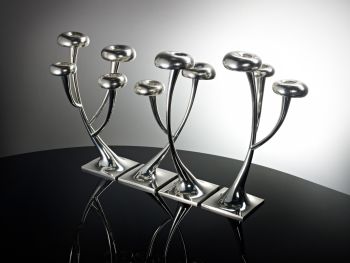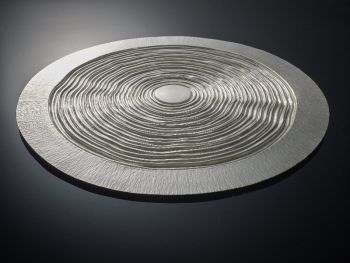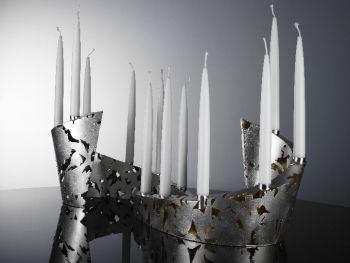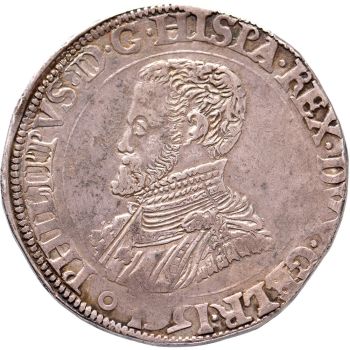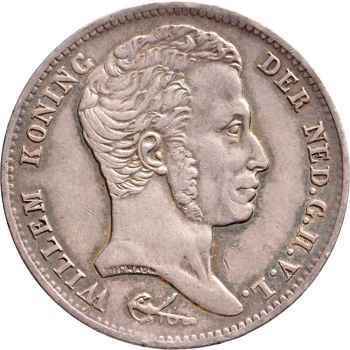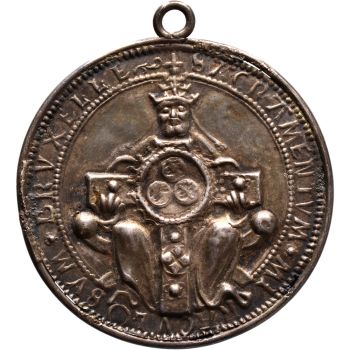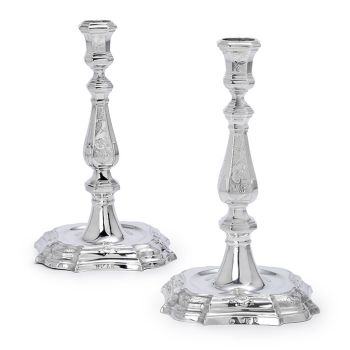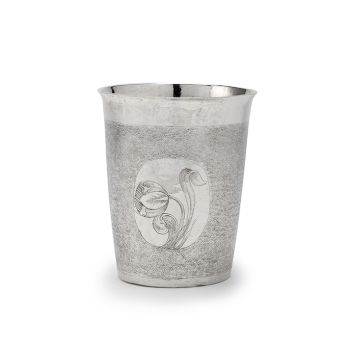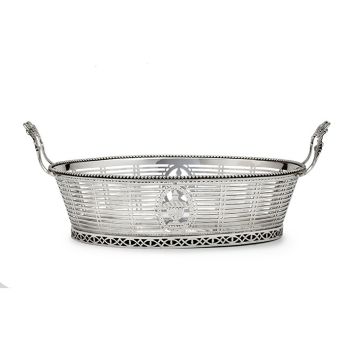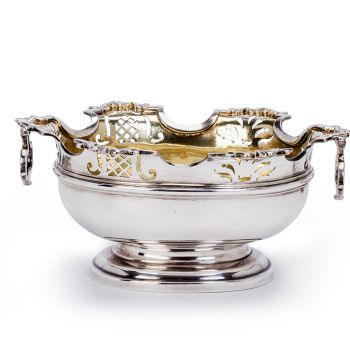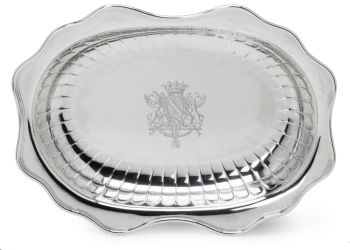Une paire de chandeliers hollandais en argent 1784
Johannes Schiotling
Argent
15 cm, ø 10 cm
Prix sur demande
Jacob J. Roosjen SRI
- Sur l'oeuvre d'artThe candlesticks consist of a round base, which is partially fluted and transitions into the stem, engraved with the coats-of-arms of HOPE and VAN DER HOEVEN. The sconce is fluted in similar outline and has a detachable nozzle, which is engraved with the same coats-of-arms. Fully marked at the reverse of the base, displaying assay stripes.
The coats-of-arms are those of John Hope (1737-1784) and his wife Philippina Barbara van der Hoeven (1738- 1790). This couple married in 1763.
Hope was a famous Amsterdam merchant and banker. He was governor of the East India Company and many times a member of the Board of Aldermen in Amsterdam.
These small candlesticks, possibly made as gaming table candlesticks, were manufactured in 1784, the year John Hope died.
They are included in the catalogue associated with the exhibition at the Rijksmuseum, dedicated to the work of silversmith Johannes Schiotling (Cat. 37).
John Hope (1737-1784) was a fabulously wealthy Amsterdam banker of English origin. In 1763 he married Barbara Philippina van der Hoeven (1738-1789), daughter of a Rotterdam regent. They had three sons. Besides a house at Keizersgracht and Herengracht in Amsterdam and a house in The Hague, John Hope had various estates, namely Groenendaal, which he merged with Bosbeek in Heemstede and Castle Nederhorst, which allowed him to be called Lord of Nederhorst and ’s Gravenambacht since 1774. John's ambitions were not only in trading. In 1765 he became alderman of Amsterdam, in the Amsterdam Council in 1768 and in 1770 he became governor of the VOC. Besides houses John also collected art. In 1771, together with his uncle Adrian, he bought paintings from the estate of their Rotterdam friend Bisschop.
The Bisschop Cabinet was a renowned collection, containing paintings of almost all Northern and Southern Dutch 17th century masters. This collection John Hope filled with paintings by Rembrandt, Ter Borch and Metsu from the collection Braamcamp. He had an extensive collection of sculptures in marble, stone, ivory and plaster, Japanese lacquer ware, porcelain and antique mosaic table tops from the excavation at Tivoli.
Provenance:
-John Hope and his wife Philippina Barbara van der Hoeven, 1784-1789
-Lord Francis Pelham Clinton Hope, Deepdence, Dorking
-Collection Joseph M. Morpurgo, Amsterdam, ca 1960-2016.
Literature:
-Exhibition catalogue, Johannes Schiotling, een Amsterdamse zilversmid (1730-1799), Rijksmuseum Amsterdam, 1976, cat. nr. 37.
J. Verbeek, Antiek, Johannes Schiotling, zilversmid (1730-1799) en John Hope, bankier (1737-1784), 11e jrg nr. 6, 1977, pp 523-524, afb. 12.
-J.W. Niemeijer, ‘De kunstverzameling van John Hope’, Verzamelen in Nederland, Nederlands Kunsthistorisch Jaarboek nr. 32 (1981), pp. 127-232. - Sur l'artisteJohannes Schooling (1730, 1799) est né à Göteborg, en Suède, en 1730. Il était un orfèvre bien connu. En 1747, il commença un apprentissage de six ans chez Olof Fernlöf, l'un des meilleurs orfèvres de Göteborg. En 1753, il réussit ses examens de compagnon. On ne sait rien des neuf prochaines années; il a probablement voyagé jusqu'à se retrouver à Amsterdam en 1762. Schiotling s'est inscrit comme maître à la guilde des orfèvres d'Amsterdam et s'est marié. A Amsterdam, un groupe d'orfèvres gravitait autour de lui. Son entreprise produisait de nombreuses pièces et Schiotling se concentrait de plus en plus sur la vente au détail plutôt que sur la fabrication d'objets en argent. Bien que son atelier produise de nombreux candélabres, il vend de nombreux objets différents. Johannes Schiotling est mort en 1799.
Êtes-vous intéressé par l'achat de cette oeuvre?
Artwork details
Catégorie
Style
Matériel & technique
Couleur
Related artworks
- 1 - 4 / 6
Elisabeth Treskow
Lapis lazuli afghan incrusté d'or sur un support en argent1950 - 1960
Prix sur demandeJacob J. Roosjen SRI
1 - 4 / 24Artiste Inconnu
UN PLAT EN ARGENT LOBBED INDONÉSIEN INSOLITElate 17th
Prix sur demandeZebregs & Röell - Fine Art - Antiques
1 - 4 / 24Artiste Inconnu
Bécher hollandais en argent XVIIe siècle1653 - 1677
Prix sur demandeJacob J. Roosjen SRI
Elisabeth Treskow
Lapis lazuli afghan incrusté d'or sur un support en argent1950 - 1960
Prix sur demandeJacob J. Roosjen SRI
1 - 4 / 12

